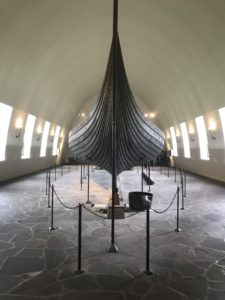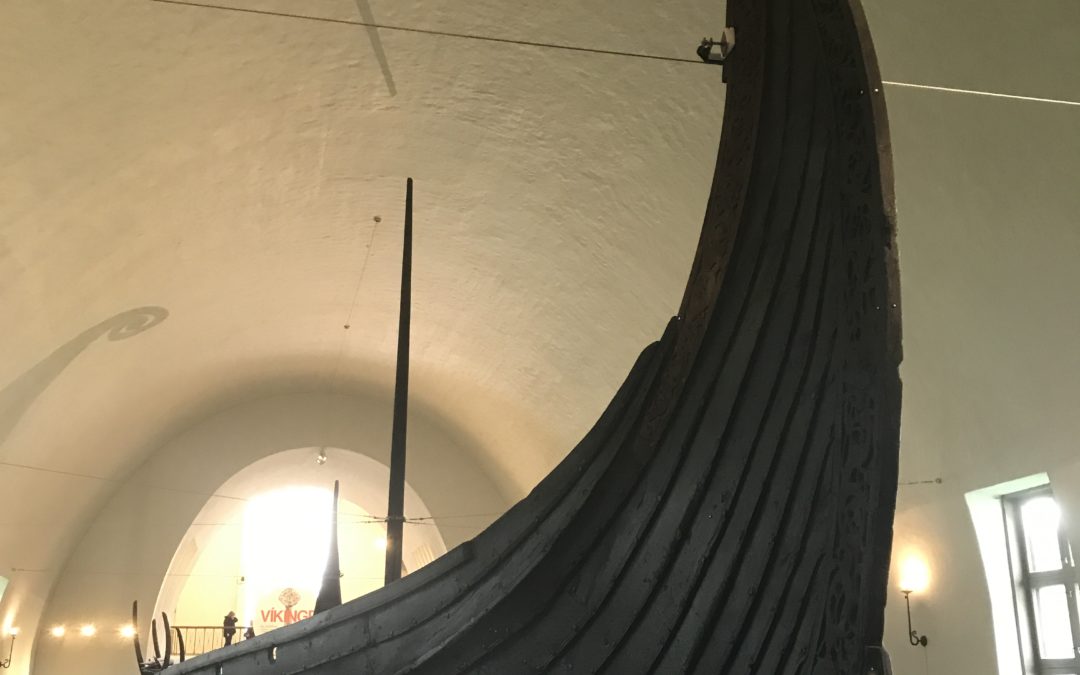Here I engage in my own vanity by explaining my journey as an adult spanning more than 58 years. I referred to it earlier in my book as a “sheer strake,” a nautical term describing the arc of the lines of a ship from stem to stern. The shape and configuration of a sheer strake dictates the size, type and stability of the vessel. The great 7th Century Viking ships exhibited at the Viking Museum in Oslo, Norway is one of the most beautiful lines of a ship of any age. Its design allowed Leif Erickson to sail in an open vessel over rough seas, often through ice flows, powered by a single sail for weeks if months at a time, anywhere in the world across vast stretches of the Atlantic Ocean.
 At the stern is Vietnam, at midships my service in EPA and career in the private sector, and on the bow the publishing of this book and what may follow. My life’s arc began as a 25-year-old ensign in the United States Navy and my experience and lessons learned from the American War in Vietnam. I was disabused by my own generation upon my return as a “baby killer.” This haunted me.
At the stern is Vietnam, at midships my service in EPA and career in the private sector, and on the bow the publishing of this book and what may follow. My life’s arc began as a 25-year-old ensign in the United States Navy and my experience and lessons learned from the American War in Vietnam. I was disabused by my own generation upon my return as a “baby killer.” This haunted me.
At the stern is my early education followed by Vietnam, at midships my service in EPA and career in the private sector, and on the bow the publishing of this book and what may follow. My life’s arc began as a barefoot Florida cracker in the 1950’s segregationist era who was sent away to boarding school in New England where my most of my schoolmates came from wealthy families. There at 16 and having been derided as a “rebel,” I raised the Confederate Battle Flag calling out the racism and bigotry I saw in New England. After graduating from Vanderbilt Engineering School I was drafted out of the Peace Corps and received a commission in the United States Navy. My service in combat in the riverine forces in the American War in Vietnam taught me to challenge the policies of my government to which I did not agree. This included the waste, fraud, and abuse resulting from Congress cutting blank checks. Upon my return to the San Francisco Bay area, I was disabused by my own generation as a “baby killer.” This haunted me.
I returned to my career as environmental engineer in EPA’s predecessor in Atlanta in 1970 and wrote EPA’s first environmental impact statement. I allied with a local grass roots movement to “Save the Chattahoochee River.” I left the EPA because government wasn’t for me — I was uncomfortable telling city and county officials and their consulting engineers that they had to do it EPA’s way or not get grants for the construction of sewerage works. I joined the Boston-based prestigious Arthur D. Little, Inc. in 1973 and learned the skills of being a manager. In 1975 I joined a regional planning program under the CWA in northern Colorado and cemented my career representing local governments in the environmental field.
In 1981 I joined the EPA as Assistant Administrator for Water because I didn’t want to go to the grave not knowing what it was like to establish and oversee my own national policies on water quality. “Sewergate” (1981-1983) was a hard lesson and in 1983 I returned to the private sector to support two households, and worked hard to make my three young children as safe and supported as possible. I let brass rings go by.
9/11 happened, I was in mid-town Manhattan that morning. What horror! My son, 18 years old, joined the U.S. Marines and became a crew chief. Bush invaded Iraq on a false pretense and his Secretary of Defense disbanded Saddam Hussain’s armed and organized Republican Guard. Chaos ensued and mullahs who run the streets with armed insurgents took over — then Isis filled the void. We just kept spending.
40 years after leaving Vietnam in 1969, I returned to my operating area in the I-Corps. The communist government virtually cleansed Vietnam of any evidence of American occupation, with few exceptions — a museum at the Advanced Marine Fire Base Khe Sanh. They tried to overrun it, just as they tried to overrun the Marine Fire base at Cua Viet. I was there. It is a young country and there are few alive who were present when we destroyed their country and killed an estimated three million Vietnamese, all told. The scars of Agent Orange around Khe Sahn and the generations of deformed babies resulting from its debilitating chemicals remains. The America governments has offered nothing as reparations. All these things bothered me.
After sponsoring a town hall meeting of more than 750 local citizens called America in Iraq in late 2005, my panel of four experts discussed the Middle East and military deployments. Tom Sutherland, who was captive of the Islamic Jihad who threatened to cut his head off for the six years he was in captivity, predicted the outcome if the U.S didn’t stop bullying our allies to join the “Coalition of the Willing” and trying to bring democracy at the point of a gun. I had enough and re-entered public life and ran for Colorado’s fourth congressional seat against an evangelist who wanted to control what Americans did in their bedroom and interfere with family decisions, and a liberal African-American former professional basketball player and college administrator. I won 11.3% of the vote in what was a 2-month long campaign and earned the endorsement of four of the six daily newspapers. My campaign website is now in the Archives of the Library of Congress.
Finally, this book was spawned when I was insulted by my college professor in coursework I took in my sixties. He called me and my EPA colleagues under Reagan a “bad person”. My governing principles, my interest in history which I have lived and been a part of in the environmental field, and my life’s experience are my best defense from the criticism of those I have offended and who don’t agree with my views. Yet, I am going to offer President Biden and his advisors some advice, something their advisors don’t understand that has been baked into their thinking as part of their roles as leaders in the environmental field — and that is to forsake hierarchical thinking and reconfigure the EPA in a bottom-up, inclusionary approach to governance.

